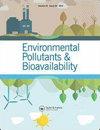食物垃圾处理生活污水的方法及潜在资源的回收
IF 3.2
4区 环境科学与生态学
Q2 BIOCHEMISTRY & MOLECULAR BIOLOGY
Environmental Pollutants and Bioavailability
Pub Date : 2022-10-21
DOI:10.1080/26395940.2022.2137061
引用次数: 3
摘要
与卫生、食物垃圾(FW)和生活污水(DWW)相关的人口持续增长在全球变得越来越重要。需要作出重大努力并采取适当措施,利用FW和DWW获取资源。本文综述了水冷水和水冷水的常规处理技术、面临的挑战以及相关优点。在本综述中,DWW通常被称为黑水(BW)/粪便。由于资源放大的理由,该审查建议将两种混合物(FW和DWW)都储存在地下储罐中数月或数年。它们在生物过程中进一步生物降解,以稳定的消化物产生能量。出水的特点是有机酸含量低,ph值低,出水稳定、消毒。第二条建议的路线是整合厌氧消化,堆肥和热解。厌氧消化将提供生物能源和消化物。堆肥将迎合堆肥生产,避免在热解过程中消化干燥和加热成本。沼液热解生成生物炭和生物能源材料,同时生物炭在生物过程中得到利用,提高了生物工艺性能。综合技术路线可以使DWW和FW在现实环境中实现最大的资源回收和可持续发展。这一概念可以应用于现有设施,以创造一个更清洁和更有效的DWW与FW回收。但是,必须进行全面的技术经济分析。本文章由计算机程序翻译,如有差异,请以英文原文为准。
Approaches for treating domestic wastewater with food waste and recovery of potential resources
ABSTRACT Continuous population growth associated with sanitation, food waste (FW), and domestic wastewater (DWW) is becoming critical globally. Crucial efforts and appropriate measures to utilize the FW and DWW for resources are needed. This paper reviews the conventional treatment techniques, challenges, and associated merits for treating FW and DWW. In the context of this review, DWW is often referred to as blackwater (BW)/feces. Due to the rationale for resource amplification, the review proposed that both mixtures (FW and DWW) be stored in a sub-surface storage tank for several months or years. They are further biodegraded in a bioprocess to generate energy with stabilized digestates. The effluent’s peculiar features are low organic acids with a low pH4 value, offering a stabilized and sanitized effluent. The second proposed route was to integrate anaerobic digestion, composting, and pyrolysis. Anaerobic digestion will offer bioenergy and digestates. Composting will cater to compost production and avert digestate drying and heating costs during pyrolysis. The pyrolysis of the digestates will generate biochar and bioenergy materials, while improved bioprocess performance is attained with the simultaneous biochar utilization in the bioprocess. The integrated technological routes can valorize DWW and FW for maximum resource recovery and sustainable development in a real-world context. The concept can be applied to an existing facility to create a cleaner and more efficient DWW with FW recycling. However, a comprehensive techno-economic analysis must be conducted.
求助全文
通过发布文献求助,成功后即可免费获取论文全文。
去求助
来源期刊

Environmental Pollutants and Bioavailability
Chemical Engineering-Chemical Health and Safety
CiteScore
4.30
自引率
3.00%
发文量
47
审稿时长
13 weeks
期刊介绍:
Environmental Pollutants & Bioavailability is a peer-reviewed open access forum for insights on the chemical aspects of pollutants in the environment and biota, and their impacts on the uptake of the substances by living organisms.
Topics include the occurrence, distribution, transport, transformation, transfer, fate, and effects of environmental pollutants, as well as their impact on living organisms. Substances of interests include heavy metals, persistent organic pollutants, and emerging contaminants, such as engineered nanomaterials, as well as pharmaceuticals and personal-care products as pollutants.
 求助内容:
求助内容: 应助结果提醒方式:
应助结果提醒方式:


